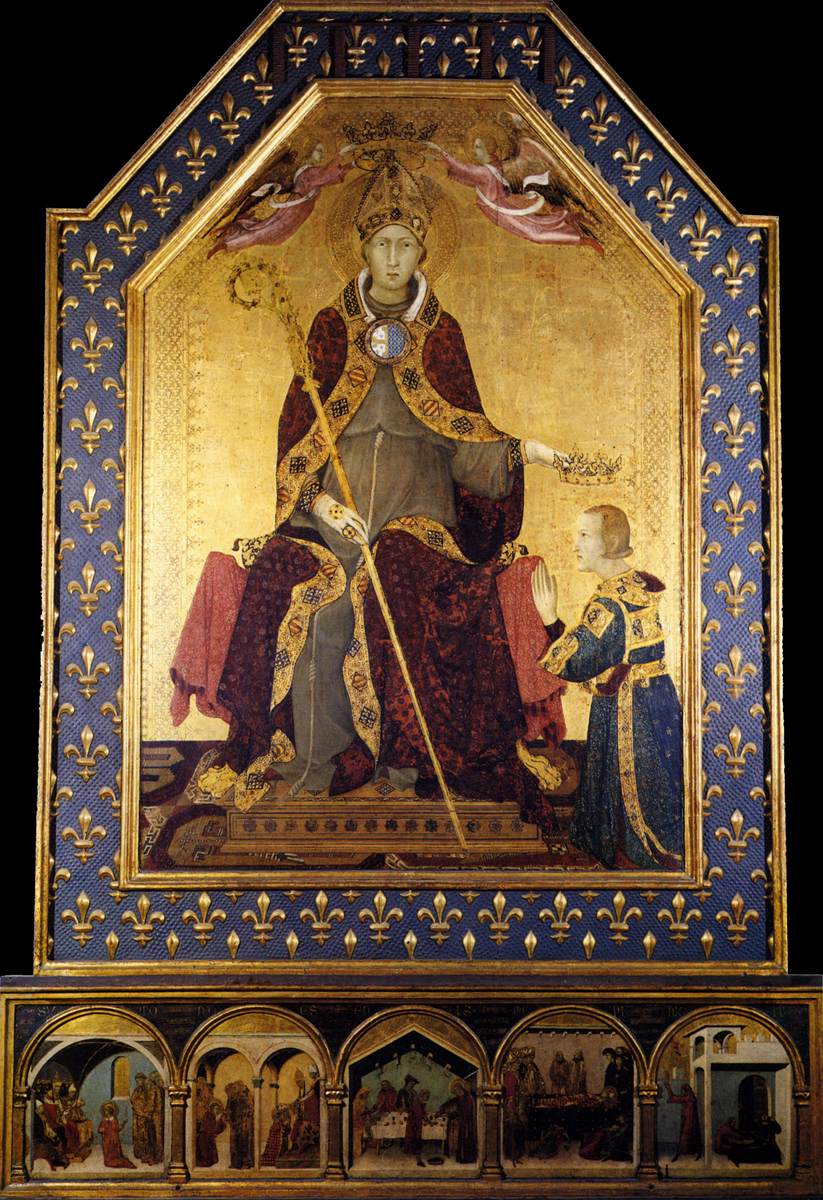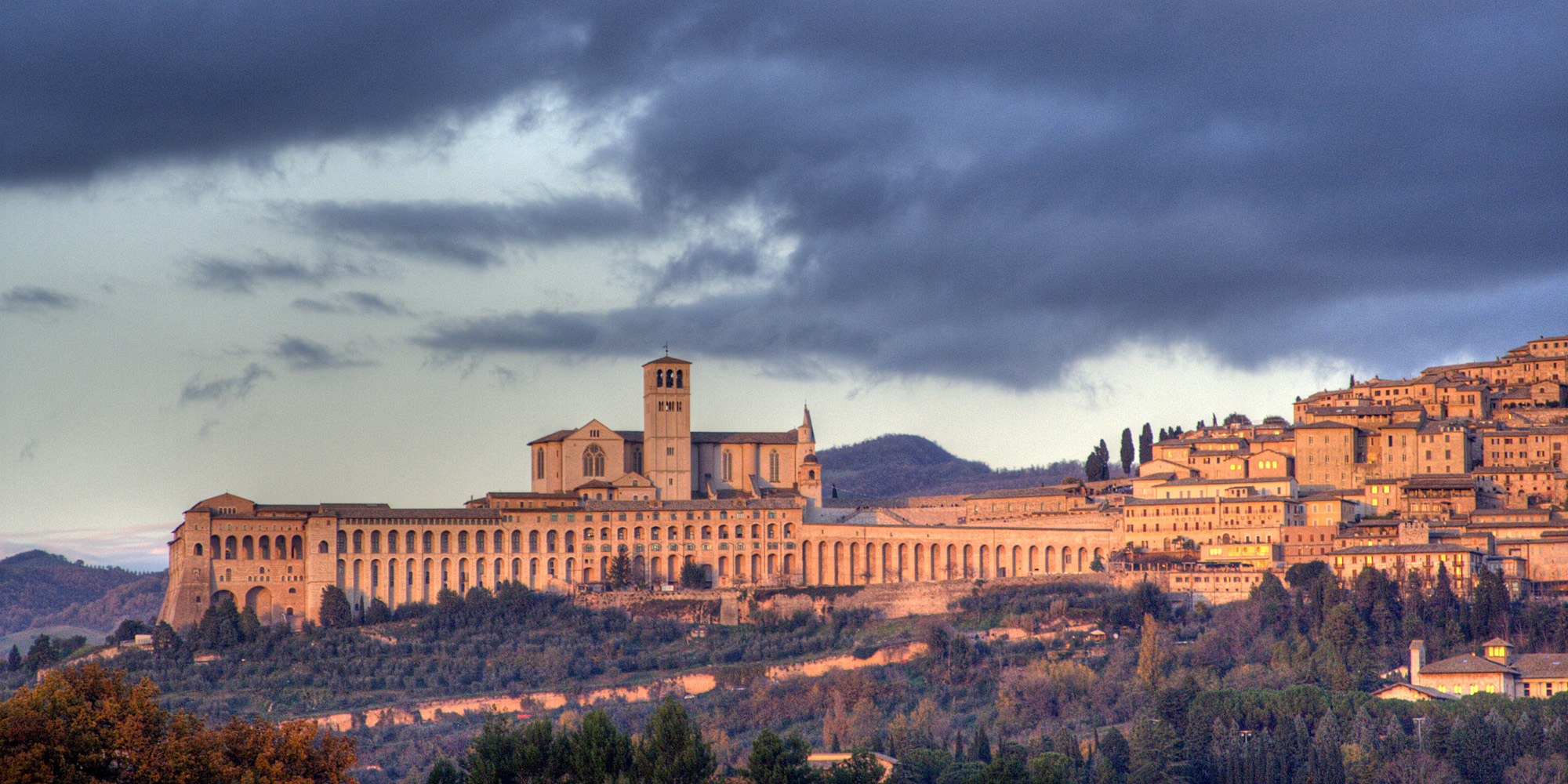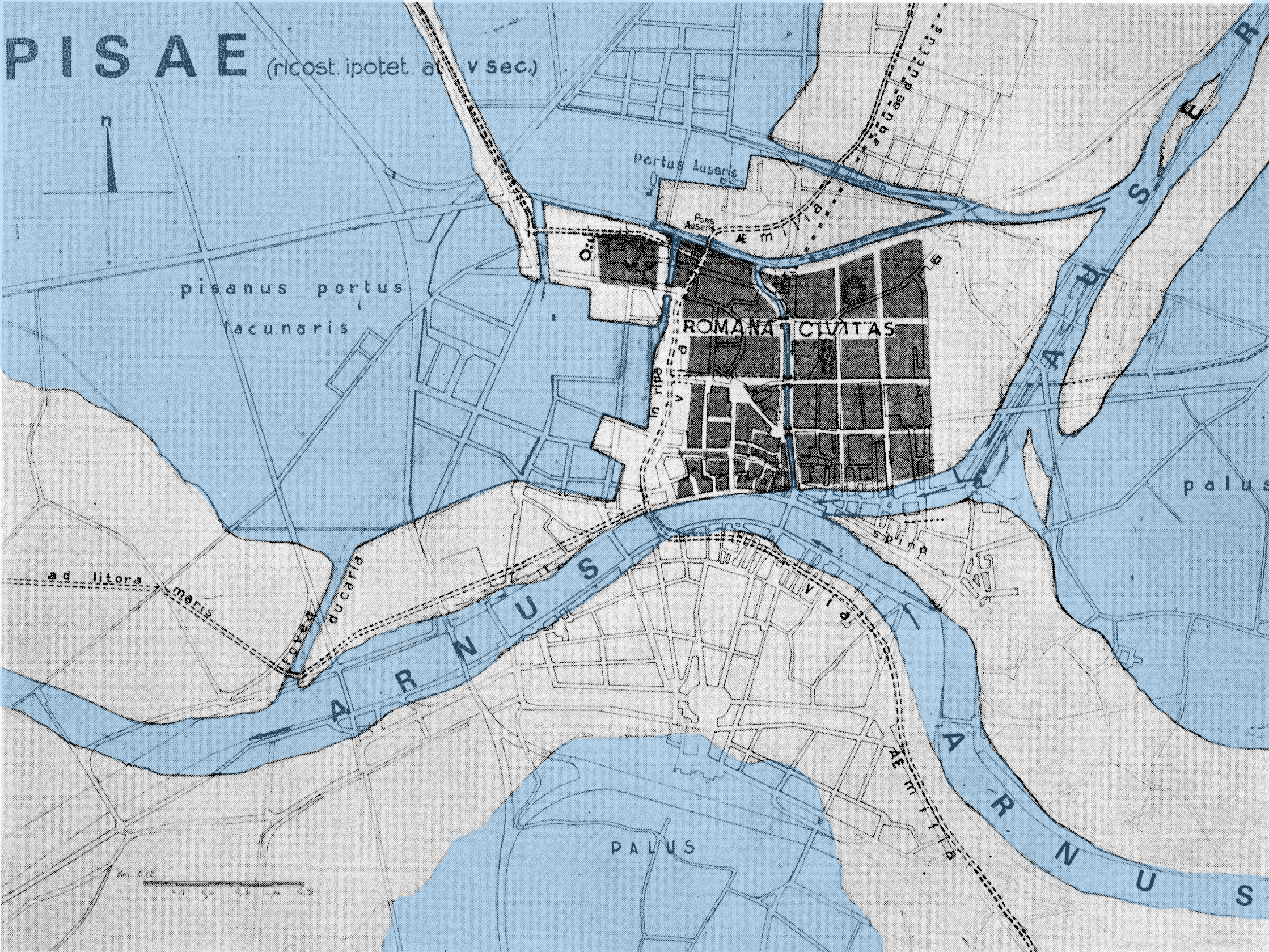|
Simone Martini
Simone Martini ( – 1344) was an Italian painter born in Siena. He was a major figure in the development of early Italian painting and greatly influenced the development of the International Gothic style. It is thought that Martini was a pupil of Duccio di Buoninsegna, the leading Sienese painter of his time. According to late Renaissance art biographer Giorgio Vasari, Simone was instead a pupil of Giotto di Bondone, with whom he went to Rome to paint at the Old St. Peter's Basilica, Giotto also executing a mosaic there. Martini's brother-in-law was the artist Lippo Memmi. Very little documentation of Simone's life survives, and many attributions are debated by art historians. According to E. H. Gombrich, he was a friend of Petrarch and had painted a portrait of Laura. Biography Simone was doubtlessly apprenticed from an early age, as would have been the normal practice. Among his first documented works is the '' Maestà'' of 1315 in the Palazzo Pubblico in Siena. A copy of ... [...More Info...] [...Related Items...] OR: [Wikipedia] [Google] [Baidu] |
Saint Louis Of Toulouse Crowning His Brother Robert Of Anjou
''Saint Louis of Toulouse Crowning His Brother Robert of Anjou'' is a painting by Simone Martini, commissioned from him by Robert of Anjou during the artist's stay in Naples around 1317. It shows Robert being crowned by his elder brother Louis of Toulouse, who was made a saint in 1317. It is now in the National Museum of Capodimonte Museo di Capodimonte is an art museum located in the Palace of Capodimonte, a grand Bourbon palazzo in Naples, Italy. The museum is the prime repository of Neapolitan painting and decorative art, with several important works from other Italian ... in Naples.Pierluigi Leone de Castris, ''Simone Martini'', Federico Motta Editore, Milano, 2003 (Italian) References Bibliography *Pierluigi Leone de Castris, Simone Martini, Federico Motta Editore, Milano 2003. *Chiara Frugoni, Le storie di San Francesco. Guida agli affreschi della Basilica superiore di Assisi, Einaudi, 2010. *P. de Rynck, Simone Martini: «San Luis de Toulouse coronando a Roberto de A ... [...More Info...] [...Related Items...] OR: [Wikipedia] [Google] [Baidu] |
Petrarch
Francesco Petrarca (; 20 July 1304 – 18/19 July 1374), commonly anglicized as Petrarch (), was a scholar and poet of early Renaissance Italy, and one of the earliest humanists. Petrarch's rediscovery of Cicero's letters is often credited with initiating the 14th-century Italian Renaissance and the founding of Renaissance humanism. In the 16th century, Pietro Bembo created the model for the modern Italian language based on Petrarch's works, as well as those of Giovanni Boccaccio, and, to a lesser extent, Dante Alighieri. Petrarch was later endorsed as a model for Italian style by the Accademia della Crusca. Petrarch's sonnets were admired and imitated throughout Europe during the Renaissance and became a model for lyrical poetry. He is also known for being the first to develop the concept of the " Dark Ages".Renaissance or Prenai ... [...More Info...] [...Related Items...] OR: [Wikipedia] [Google] [Baidu] |
Florence
Florence ( ; it, Firenze ) is a city in Central Italy and the capital city of the Tuscany region. It is the most populated city in Tuscany, with 383,083 inhabitants in 2016, and over 1,520,000 in its metropolitan area.Bilancio demografico anno 2013, datISTAT/ref> Florence was a centre of medieval European trade and finance and one of the wealthiest cities of that era. It is considered by many academics to have been the birthplace of the Renaissance, becoming a major artistic, cultural, commercial, political, economic and financial center. During this time, Florence rose to a position of enormous influence in Italy, Europe, and beyond. Its turbulent political history includes periods of rule by the powerful Medici family and numerous religious and republican revolutions. From 1865 to 1871 the city served as the capital of the Kingdom of Italy (established in 1861). The Florentine dialect forms the base of Standard Italian and it became the language of culture throug ... [...More Info...] [...Related Items...] OR: [Wikipedia] [Google] [Baidu] |
Walker Art Gallery
The Walker Art Gallery is an art gallery in Liverpool, which houses one of the largest art collections in England outside London. It is part of the National Museums Liverpool group. History of the Gallery The Walker Art Gallery's collection dates from 1819 when the Liverpool Royal Institution acquired 37 paintings from the collection of William Roscoe, who had to sell his collection following the failure of his banking business, though it was saved from being broken up by his friends and associates. In 1843, the Royal Institution's collection was displayed in a purpose-built gallery next to the Institution's main premises. In 1850 negotiations by an association of citizens to take over the Institution's collection, for display in a proposed art gallery, library and museum, came to nothing. The collection grew over the following decades: in 1851 Liverpool Town Council bought Liverpool Academy's diploma collection and further works were acquired from the Liverpool Society for ... [...More Info...] [...Related Items...] OR: [Wikipedia] [Google] [Baidu] |
Laura De Noves
Laura de Noves (1310–1348) was the wife of Count Hugues de Sade (ancestor of the Marquis de Sade). She could be the Laura that the Humanist poet Francesco Petrarch wrote about extensively; however, she has never been positively identified as such. Laura had a great influence on Petrarch's life and lyrics. The historical information on Laura is meager at best. Born six years after Petrarch in 1310 in Avignon, she was the daughter of a knight, Audibert de Noves, and his wife, Ermessenda. She married at the age of 15 on 16 January 1325. Not much is known about her other than she did have a large family, was a virtuous wife, and died in 1348. Petrarch saw her for the first time on 6 April (Good Friday) in 1327 at Easter mass in the church of Sainte-Claire d'Avignon. Since this first encounter with Laura, Petrarch spent the next three years in Avignon singing his romantic love and stalking Laura in church and on her walks, even purchasing a small estate in 1337 at Vaucluse to b ... [...More Info...] [...Related Items...] OR: [Wikipedia] [Google] [Baidu] |
Basilica Of San Francesco D'Assisi
The Basilica of Saint Francis of Assisi ( it, Basilica di San Francesco d'Assisi; la, Basilica Sancti Francisci Assisiensis) is the mother church of the Roman Catholic Order of Friars Minor Conventual in Assisi, a town in the Umbria region in central Italy, where Saint Francis was born and died. It is a Papal minor basilica and one of the most important places of Christian pilgrimage in Italy. With its accompanying friary, Sacro Convento, the basilica is a distinctive landmark to those approaching Assisi. It has been a UNESCO World Heritage Site since 2000. The basilica, which was begun in 1228, is built into the side of a hill and comprises two churches (known as the Upper Church and the Lower Church) and a crypt, where the remains of the saint are interred. The interior of the Upper Church is an important early example of the Gothic style in Italy. The Upper and Lower Churches are decorated with frescoes by numerous late medieval painters from the Roman and Tuscan schools, an ... [...More Info...] [...Related Items...] OR: [Wikipedia] [Google] [Baidu] |
Chapel Of St
A chapel is a Christian place of prayer and worship that is usually relatively small. The term has several meanings. Firstly, smaller spaces inside a church that have their own altar are often called chapels; the Lady chapel is a common type of these. Secondly, a chapel is a place of worship, sometimes non-denominational, that is part of a building or complex with some other main purpose, such as a school, college, hospital, palace or large aristocratic house, castle, barracks, prison, funeral home, cemetery, airport, or a military or commercial ship. Thirdly, chapels are small places of worship, built as satellite sites by a church or monastery, for example in remote areas; these are often called a chapel of ease. A feature of all these types is that often no clergy were permanently resident or specifically attached to the chapel. Finally, for historical reasons, ''chapel'' is also often the term used by independent or nonconformist denominations for their places of worsh ... [...More Info...] [...Related Items...] OR: [Wikipedia] [Google] [Baidu] |
Uffizi
The Uffizi Gallery (; it, Galleria degli Uffizi, italic=no, ) is a prominent art museum located adjacent to the Piazza della Signoria in the Historic Centre of Florence in the region of Tuscany, Italy. One of the most important Italian museums and the most visited, it is also one of the largest and best known in the world and holds a collection of priceless works, particularly from the period of the Italian Renaissance painting, Italian Renaissance. After the ruling House of Medici died out, their art collections were given to the city of Florence under the famous ''Patto di famiglia'' negotiated by Anna Maria Luisa de' Medici, Anna Maria Luisa, the last Medici heiress. The Uffizi is one of the first modern museums. The gallery had been open to visitors by request since the sixteenth century, and in 1765 it was officially opened to the public, formally becoming a museum in 1865. History The building of the Uffizi complex was begun by Giorgio Vasari in 1560 for Cosimo I de' M ... [...More Info...] [...Related Items...] OR: [Wikipedia] [Google] [Baidu] |
Pisa
Pisa ( , or ) is a city and ''comune'' in Tuscany, central Italy, straddling the Arno just before it empties into the Ligurian Sea. It is the capital city of the Province of Pisa. Although Pisa is known worldwide for its leaning tower, the city contains more than twenty other historic churches, several medieval palaces, and bridges across the Arno. Much of the city's architecture was financed from its history as one of the Italian maritime republics. The city is also home to the University of Pisa, which has a history going back to the 12th century, the Scuola Normale Superiore di Pisa, founded by Napoleon in 1810, and its offshoot, the Sant'Anna School of Advanced Studies.Scuola Superiore Sant'Anna di Pisa Information statistics History
|
Saint Catherine Of Alexandria Polyptych
The ''Saint Catherine of Alexandria Polyptych'' (also known as Pisa Polyptych) is a painting by the Italian medieval artist Simone Martini, dating to 1320. Originally placed at the high altar of the church of Santa Caterina in Pisa, it is now housed in the Museo Nazionale di San Matteo of the same city. The work is signed SYMON DE SENIS ME PINXIT in the central panel with the ''Madonna and Child''. According to the original convent's annals, the polyptych was placed at the altar in 1320. It was thus completed by that year, having been likely begun in 1319. Description The polyptych is Martini's largest work, and includes numerous sub-panels. Aside from the seven main ones, there are 15 predella In art a predella (plural predelle) is the lowest part of an altarpiece, sometimes forming a platform or step, and the painting or sculpture along it, at the bottom of an altarpiece, sometimes with a single much larger main scene above, but oft ... figures, an upper row with other 14 ... [...More Info...] [...Related Items...] OR: [Wikipedia] [Google] [Baidu] |
Stefanone
Stefanone (active c. 1350 – c. 1390) was an Italian painter of the Trecento, active in Naples. Biography We have few details of Stefanone but for what is said of him by Bernardo de' Dominici in his biography of Neapolitan painters. He is believed to have trained along with Gennaro di Cola under Simone Martini Simone Martini ( – 1344) was an Italian painter born in Siena. He was a major figure in the development of early Italian painting and greatly influenced the development of the International Gothic style. It is thought that Martini was a pupil .... He painted a ''San Lodovico vescovo di Tolosa'', begun by Simone. volume 3, by Stefano Ticozzi, page 369. References [...More Info...] [...Related Items...] OR: [Wikipedia] [Google] [Baidu] |
Gennaro Di Cola
Gennaro di Cola (c. 1320 – c. 1370) was an Italian painter of the Trecento, active mainly in Naples. He trained with Simone Martini, and reportedly befriended Giotto. He worked in fresco alongside his pupil Stefanone. His frescoes of the testament scenes in the church of San Giovanni a Carbonara San Giovanni a Carbonara is a Gothic church in Naples, Southern Italy. It is located at the northern end of via Carbonara, just outside what used to be the eastern wall of the old city. The name ''carbonara'' (meaning "coal-carrier") was given to ... have been lost. In Santa Maria della Pietà, he painted the ''Mater Dolorosa with dead body of Christ''. References * 1320 births 1370 deaths 14th-century Italian painters Italian male painters Trecento painters Painters from Naples {{Italy-painter-14thC-stub ... [...More Info...] [...Related Items...] OR: [Wikipedia] [Google] [Baidu] |







